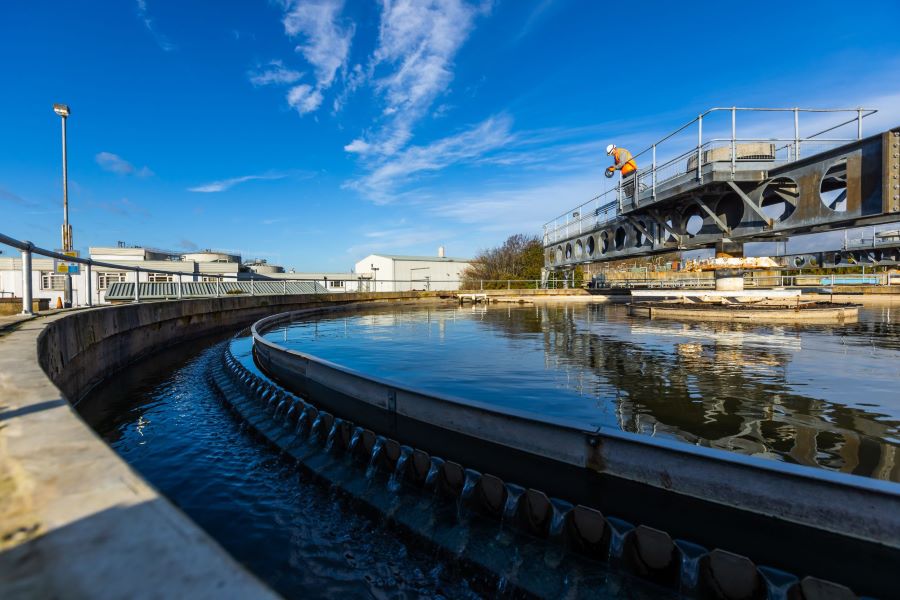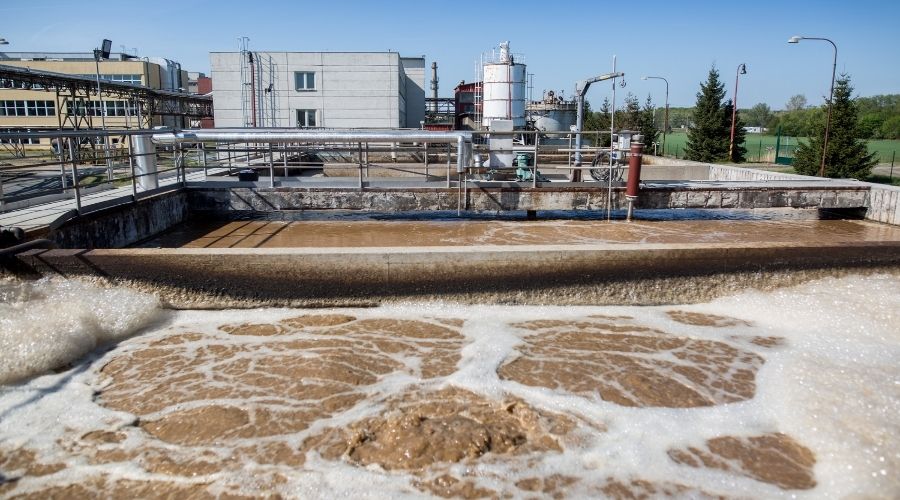In the context of increasing environmental pollution, wastewater treatment has become one of the urgent issues that need attention. Among current treatment methods, the mechanical method plays the role of a primary treatment step, helping to remove solid impurities, oils, and suspended matter before moving on to biological or physicochemical processes. With advantages such as simple equipment, low cost, and effectiveness in protecting subsequent systems, the mechanical method is widely applied in most domestic and industrial wastewater treatment plants.
The mechanical method in wastewater treatment is a set of simple processes aimed at removing insoluble solids, large-sized, or suspended particles in wastewater by physical actions such as screening, sedimentation, filtration, or separation. This is the primary treatment stage, with the main function of reducing the incoming pollutant load and creating favorable conditions for biological or physicochemical treatment in later stages. Common equipment used in mechanical treatment includes screens, grit chambers, oil–grease separators, and filtration systems.
The mechanical method does not change the chemical properties of wastewater but only separates part of the pollutants in solid form or floating on the surface. As a result, suspended solids (SS) are significantly reduced, and a small portion of organic pollution indicators such as BOD and COD is also lowered. Although the efficiency is not high if applied alone, this step is mandatory and forms the foundation in most wastewater treatment systems today.

The mechanical method in wastewater treatment removes large, insoluble solid impurities.
Screens are the first structure in the mechanical treatment system, responsible for retaining large solid impurities such as branches, plastic bags, bottles, leaves, etc., in wastewater. Screens are usually made of steel, installed at an incline, with gaps of various sizes depending on treatment requirements (coarse screens, fine screens). This device protects pumps, pipelines, and downstream structures from clogging while reducing the load of solids for subsequent treatment.
The grit chamber is designed to remove small inorganic particles such as sand, gravel, glass fragments, and coal ash based on the principle of gravity settling. These particles have a higher density than water and easily settle to the bottom when flow velocity is suitably adjusted. Removing grit from wastewater helps limit sedimentation, abrasion, and clogging in drainage systems and pumping equipment.
The sedimentation tank is an important structure used to separate suspended solids of small size, which are difficult to retain by screens or grit chambers. In the tank, wastewater is retained for a sufficient time for particles with a higher density than water to settle to the bottom, forming sludge. Sedimentation tanks can be vertical, horizontal, or radial, depending on scale and treatment requirements. This is a basic step that significantly reduces suspended solids in wastewater.
Oil–grease separators are widely used in domestic and industrial wastewater treatment systems containing oils, fats, and light-floating substances. The principle of operation is based on density difference: oils and fats are lighter than water, so they float to the surface and are skimmed or sucked out. Removing oils and fats at this stage reduces pipeline clogging, minimizes negative impacts on biological processes, and ensures equipment safety and environmental protection.
The equalization tank functions to stabilize flow rates and pollutant concentrations in wastewater before moving to subsequent treatment stages. In practice, wastewater discharge is not uniform over time in both flow and composition. The equalization tank mixes wastewater evenly, prevents localized overloading, and increases the efficiency of sedimentation, filtration, and biological treatment. In addition, the tank helps reduce odor and limits early anaerobic decomposition that could cause pollution.

Equipment in current mechanical treatment methods
Mechanical wastewater treatment, though unable to completely eliminate organic or toxic pollutants, is the mandatory first step in every wastewater treatment system. Equipment such as screens, sedimentation tanks, oil–grease separators, and equalization tanks not only reduce the pollution load but also protect and improve the efficiency of subsequent processes. Therefore, the mechanical method always plays an essential role in ensuring wastewater treatment quality and contributing to sustainable environmental protection.